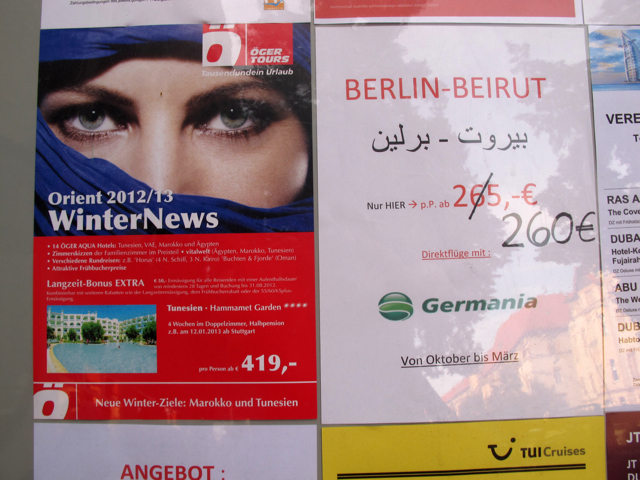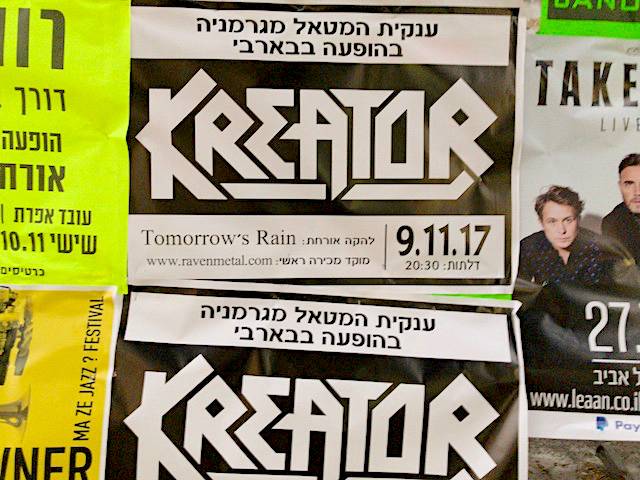Immigrants who move to Western countries from the Middle East are frequently faced with a conundrum. Do we indulge Orientalist stereotypes in order to market our businesses? After all, there is an economic value attached to such caricatures, that foregrounds our identity in the Diaspora labor market. Should we risk cheapening ourselves? It seems we have no choice in the matter.
This isn’t about self-hatred, though it inevitably indulges that anxiety. Rather, it is an exploration of how Orientalism intersects with the consumerism that recent immigrants often find themselves participating in, because it’s an easy way of establishing a business that’s “Eastern” in the products and services it offers. Everyone does it, since it’s designed to appeal to the Western consumer. It is also done with the understanding that consumers from the owner’s area of the world will come anyway. How else would they be reached out to?
I won’t deny that there’s something discomfiting about the situation. It would be nice if Middle Eastern culture did not have to be insinuated in our economic activities so prominently. Let’s explore how a few business in Berlin’s Neukölln district struggle with this dilemma. There’s a lot of questions raised here, the most prominent of which, of course, is where the boundary between self-parody, and marketing to members of one’s own immigrant community, really lies.

Cafe Mai has chosen to market itself to Westerners. How might we ascertain this? The images included this advert evince a mysterious quality typical of European visions of the Middle East. Hence, the Bedouin camel-rider, the setting sun over the desert, and the smokey Arabic calligraphy inscribed on the hookah. Though the cafe is frequented by Arabs, such symbols are meant to foreground the cultural identity of the business, and reach out to Germans who associate such symbols with pleasure.

Many of the same concepts behind the first Cafe Mai sign are present here. The cappuccino, and the cup of tea, explain that this is a cafe, not just a shisha parlor. Otherwise, the images are familiar, and about ethnicity: the veiled, green eyed woman (rather than the typical brown,) and the generic Arab, sitting on a camel. Astride his steed-equivalent, there is nothing especially threatening about him. Clad in traditional costume, with a cooking pan hanging from his saddle, he looks more curious, than anything else. Is this the owner of the cafe, en route to Germany? No, but you get the idea.

The veiled woman is a dead giveaway. It shouldn’t come as a surprise that much of post-colonial European identity is defined by a sexual vision of its former colonies. Veiling has been at the center of this. The mystery of a veiled woman is derived from a Western fantasy of the Sultan’s harem, which is explicitly alluded to in the event being advertised here, as well as the lead photograph that starts out this article. However, there is a crucial detail here worth noting. The veiled woman clearly has white skin. Her sexuality is defined by a vision of women that includes Europeans submitting to Middle Eastern gender roles.

This, in my opinion, is a bit of a different approach. Rather than cashing in on easy Orientalist stereotypes, the owner has chosen to showcase a sense of community of which Middle Eastern culture is a part. However, judging by the organization’s German website, this has a sinister purpose when considered in light of German discomfort with multiculturalism. The group candidly discusses the method by which Diasporas can best integrate into German society. Judging by how ethnic Germans dominate the photograph on this business card, one must reflect on what that actually means.
*****
It is difficult to understand why persons unfairly portrayed by Orientalist imagery would still find it useful. It may be read as self-hating, to cite the term frequently used to describe, however wrongly, Diaspora Jews willing to indulge Israel criticism, as though it were anti-Semitism. In the same vein, many immigrant business owners would argue that they are assimilating it because they need to attract customers who find themselves drawn to such iconography, including Middle Easterners. Certainly, the persistence of Orientalist caricatures of the Levant, in the post-colonial West, makes avoiding it next to impossible.
Clearly, the culture of colonialism has been internalized. Though it may inevitably correspond with continued Western intervention in the Middle East, its integration, in the overall culture of Arab-Muslim immigration, in Europe, means that many migrants do not find its symbols offensive, and dismiss them as unworthy of their concern. If they give it any critical thought, in this light, at all. This is what I find most interesting. It doesn’t necessarily mean that we need to stop criticizing Orientalism, as I’ve already suggested. We just need to be more specific about the instances in which it is, in such instances, harmful.
Photographs courtesy of Joel Schalit





